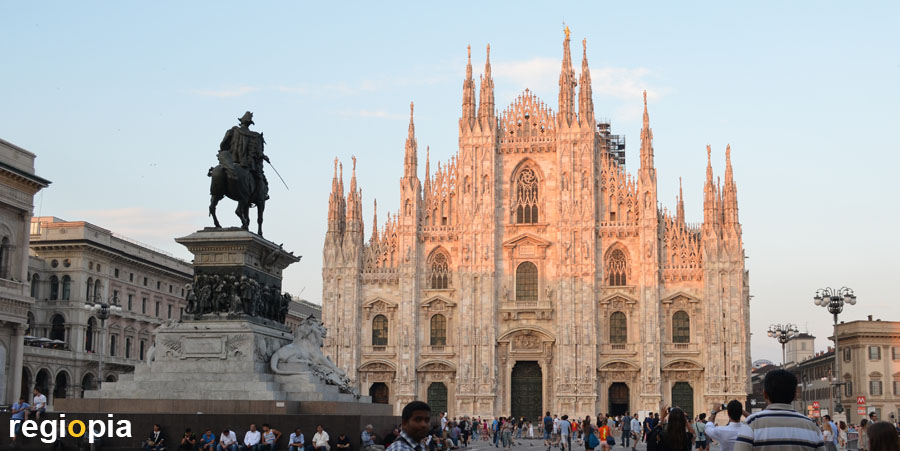
Duomo Santa Maria Nascente
The Milan Cathedral is the most famous landmark of Milan. After St. Peter's Basilica in Rome and the Florence Cathedral, the Milan Cathedral is the third longest church in Italy at 135 m. In terms of area, it is the third largest church in the world, after St. Peter's Basilica and Seville Cathedral.
A Roman temple and a small church used to stand on the place where the Milan Cathedral was built. The foundation stone for the Gothic church was laid in 1386, the cathedral was consecrated in 1572, but the facade was still missing. The marble facade was not completed until 1813. The cathedral was built from brickwork and clad with marble from Val d'Ossola on Largo Maggiore.
If you have time, you should take the lift to the roof of the cathedral, here you have a wonderful view over Milan. The special thing about Milan Cathedral is the lack of a bell tower, but you can walk around on the roof of the cathedral, like on a square above the city. On the roof you can also see the gilded Madonna on the crossing tower.
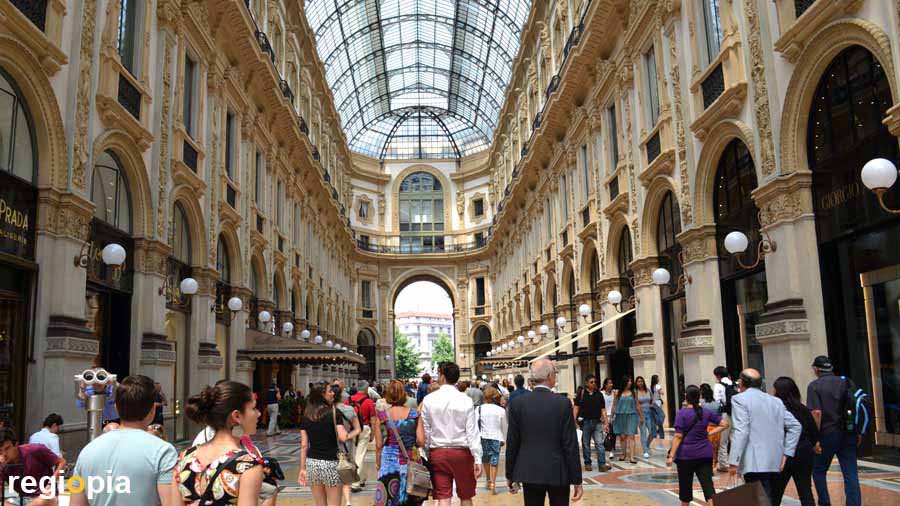
Galleria Vittorio Emanuele II
The elegant shopping arcade was opened in 1867 by King Vittorio Emanuele II. The Galeries St. Hubert in Brussels served as a model for the Galleria Vittorio Emanuele II. The light-filled passage was built by architect Giuseppe Mengoni within two years. Under the 47 m high dome the mosaics show the cities of Milan, red cross on a white ground, the bull of Turin, the she-wolf of Rome and the lily of Florence. Some people believe it bring good luck if you stand on the bull of Turin and turn around onve, with the left heel on your own axis.
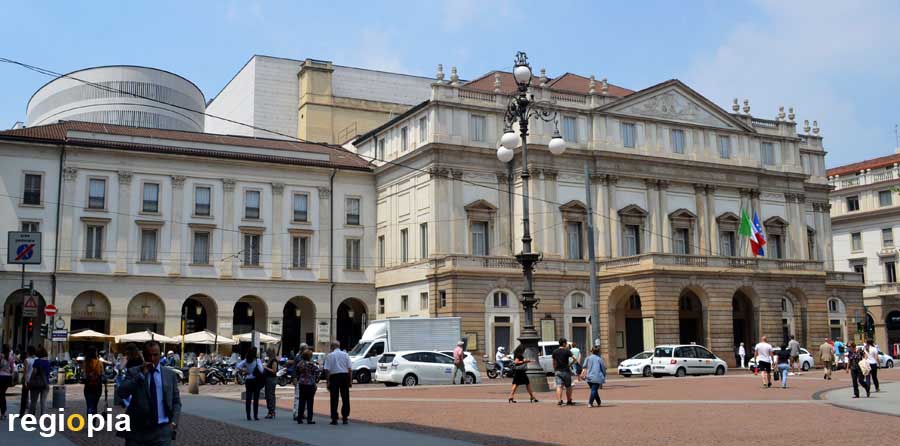
Teatro alla Scala
The "Scala" is one of the most famous opera houses in the world. Opened in 1778, the theater was bombed in 1943 and rebuilt in 1946. In 2004 it received a new stage tower by Mario Botta (on the photo on the left). The name "Scala" comes from the founder Beatrice Regina della Scala of the church of Santa Maria della Scala, which was demolished for the Theater Regio Ducale. When it burned down in 1776, the Teatro alla Scala was built. The Milan Opera House can accommodate over 2,000 spectators. The baroque interior has a very impressive effect due to the six rows of boxes lying one above the other.
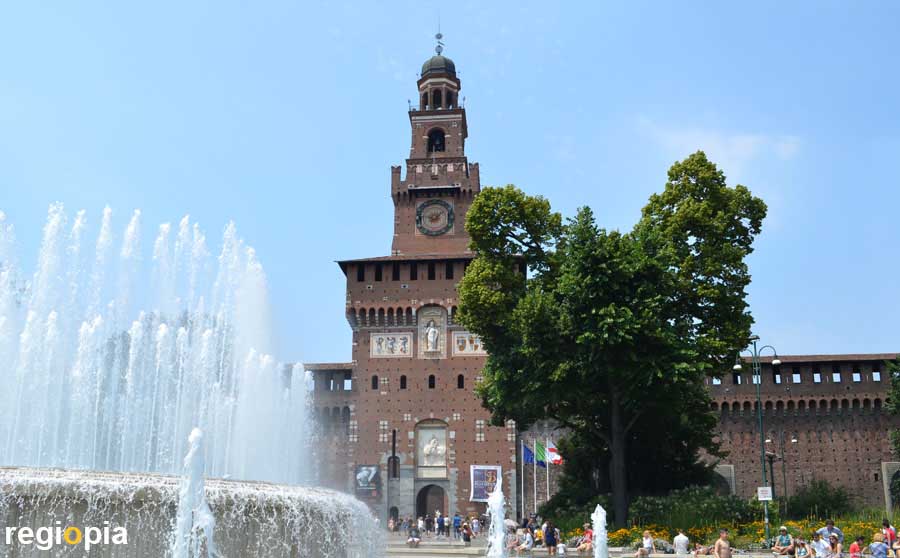
Castello Sforzesco
The fortress was built by "Galeazzo il Visconti" in 1368. Under Duke Filippo Sforza, the castle was extended to a palace. After Milan was ruled for many years by other European powers, the castle fell into ruins and was rebuilt as a museum in 1893.
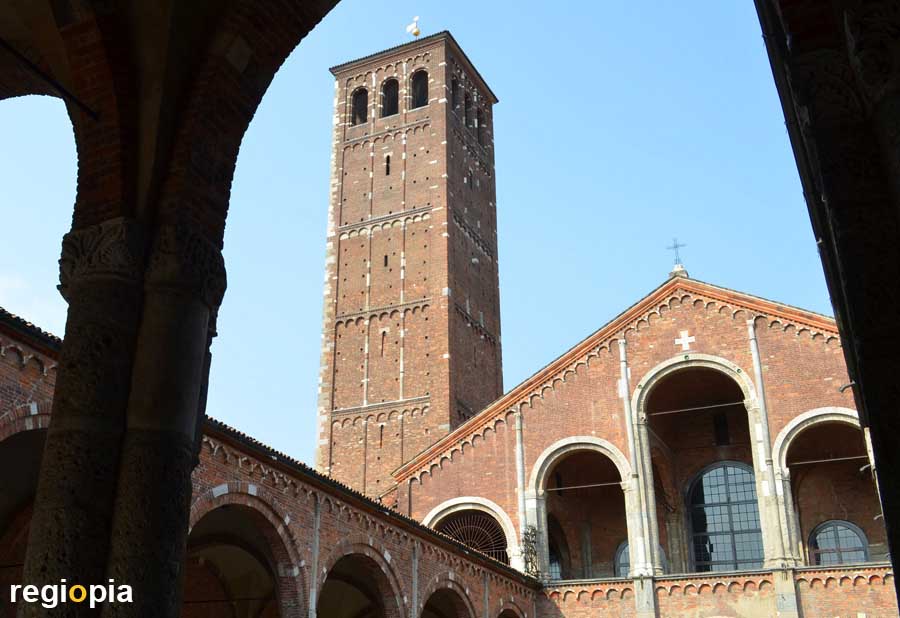
Sant' Ambrogio
The church was built by Bishop Ambrosius in 386, after reconstruction works in the 11th century it got its present appearance. The atrium in front of the church used to serve as a refuge for citizens, before the city wall included the church. The golden altar and the sarcophagus are the most famous objects of the church "St Ambrogio".
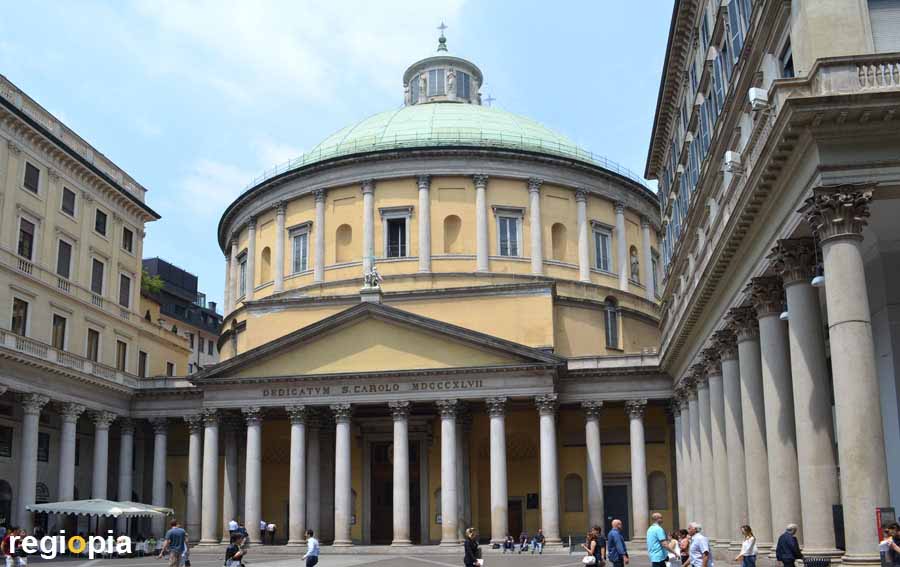
San Carlo al Corso
Directly on the pedestrian precinct is the neoclassical church of San Carlo. Its architect Carlo Amati obviously took the example of the Pantheon in Rome. San Carlo al Corso was completed in 1847.
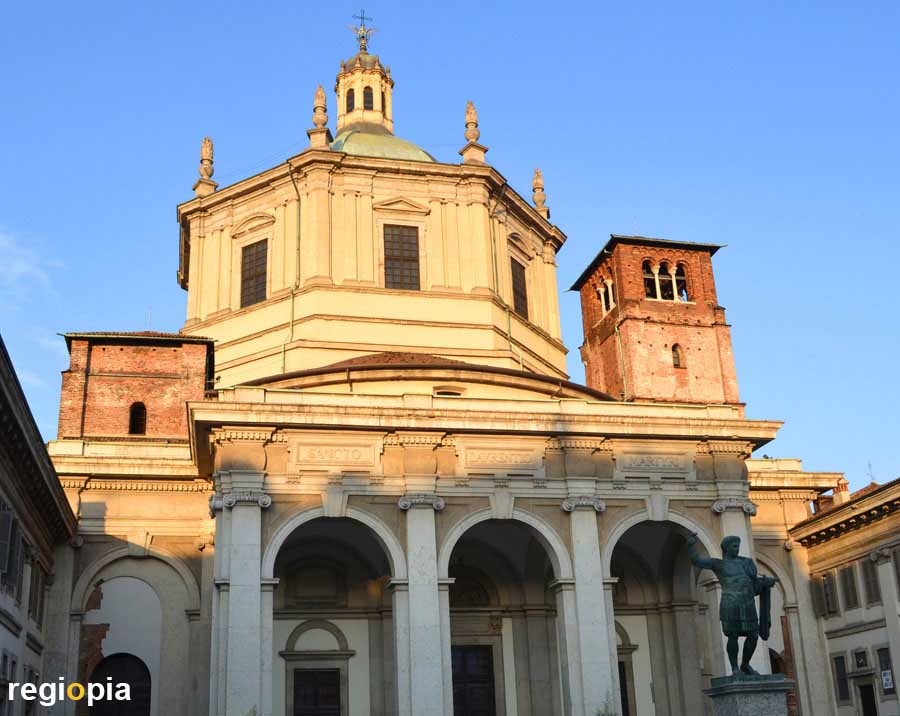
San Lorenzo alle Colonne
The church of "San Lorenzo Maggiore" was built around 400 AD and is considered to be one of the oldest Christian central buildings. The church was rebuilt after the collapse of the dome in 1573. On the square in front of the church, stands a colonnade of Roman times and a statue of Emperor Constantine.
Ads
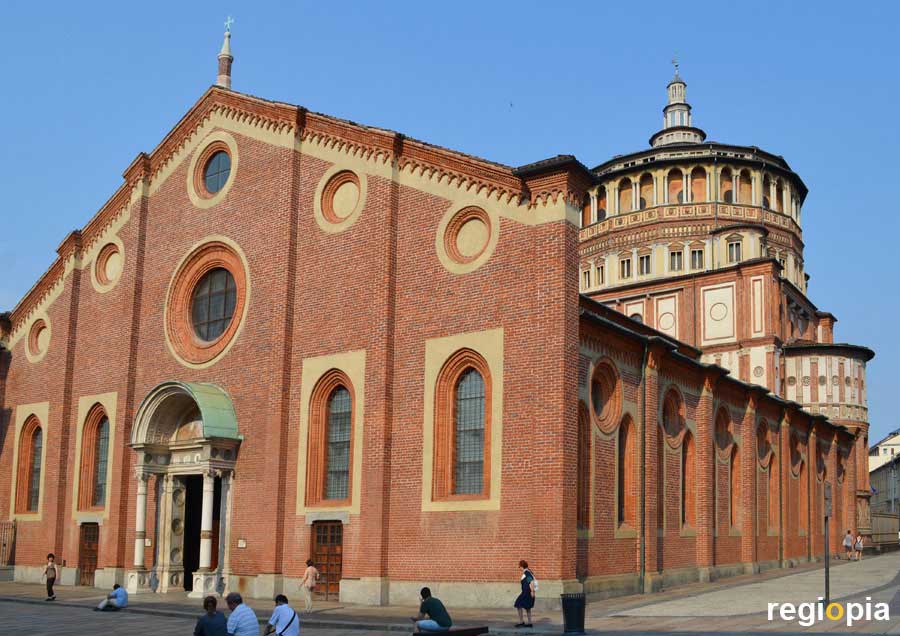
Santa Maria delle Grazie
The Santa Maria delle Grazie houses Leonardo da Vinci's Last Supper in the refectory (dining room). The mural was created by Leonardo da Vinci in 1498 using the secco technique (dry wall painting). The Last Supper is 4.22 mx 9.04 m and is located at the front of the dining room. On the opposite wall is a fresco depicting the crucifixion of the Savior. The "Last Supper" is of great importance in terms of art history because it was the first time that all lines were constructed towards a central vanishing point. This vanishing point is in the head of Jesus Christ. Jesus sits in the middle of the picture. Jesus just announced that one of the disciples would betray him. Judas, who is betraying Jesus in the garden of Gethsemane, sits on the right-hand side of the table and holds a bag of money in his hand. The other disciples discuss and gesticulate wildly with indignation.
Information on tickets can be found under Il cenacolo / Last Supper on the church's website.
Santa Maria dell Grazie is a UNESCO World Heritage Site because of Leonardo da Vinci's "Last Supper". The church of the Dominican monastery was built by Francesco I. Sforza in 1490 as a church of the grave.
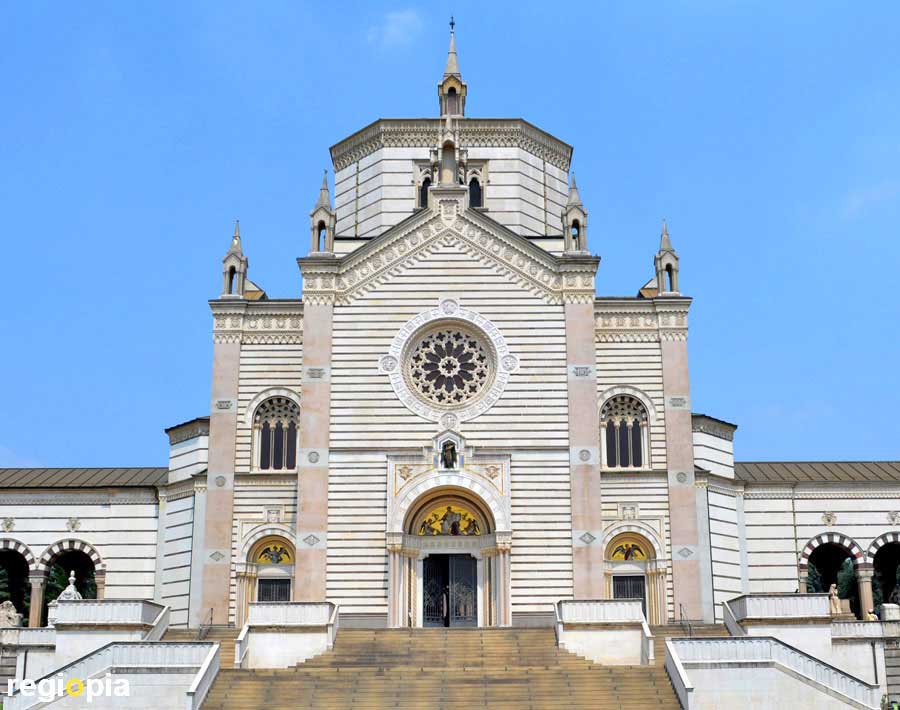
Cimitero Monumentale
Carlo Maciachini built the monumental cemetery in 1866. The Milan Highsociety built magnificent monuments in the 19th century in honour of their families. The "Cimitero Monumentale" is one of the top sights in Milan.
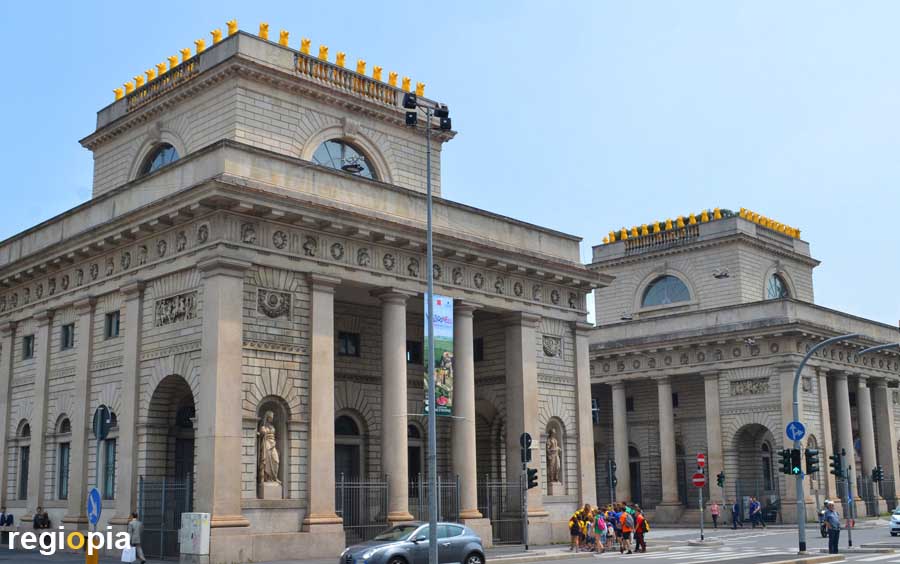
Porta Venezia
The classical Porta Venezia was created in the course of the transformation of the former city fortifications. The gate was built in 1828 by Rodolfo Vantini. On Corso Venezia are many impressive city palaces, such as the Palazzo Rocca-Saporiti and the Palazzo Castiglioni.
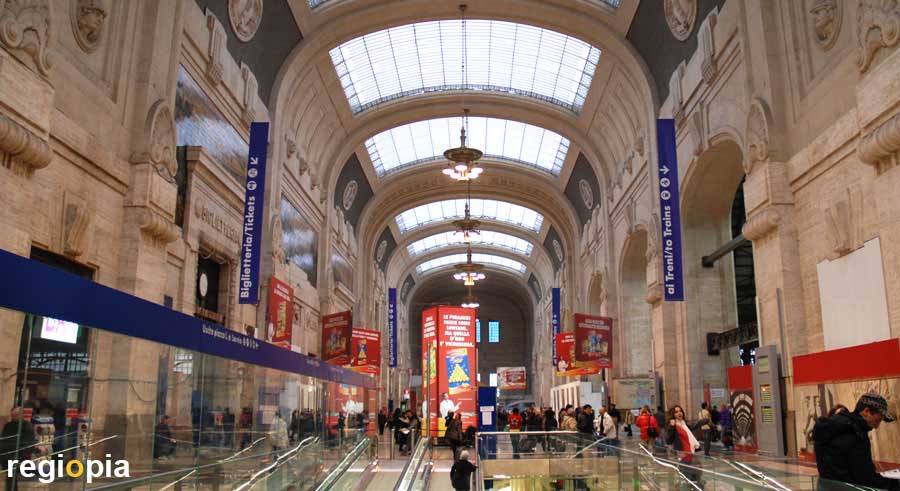
Milano Centrale
The station "Milano Centrale" is a cathedral for traffic and progress. The station replaced an older station that could not keep up with the increased traffic through the Simplon tunnel (1906). The construction work on the new central station in Milan began in 1913 but was stopped by the First World War. After the takeover of power by Benito Mussolini in 1922, the design was converted to monumental. The architect Ulisse Stacchini designed a huge Art Nouveau building with fascist sculptures and quotations from other eras of architectural history. The main facade is 200 m long and 72 m high. The "Milan Central Station" was inaugurated in 1931 with 24 tracks.
Ulisse Stacchini also designed the San Siro Stadium in Milan.
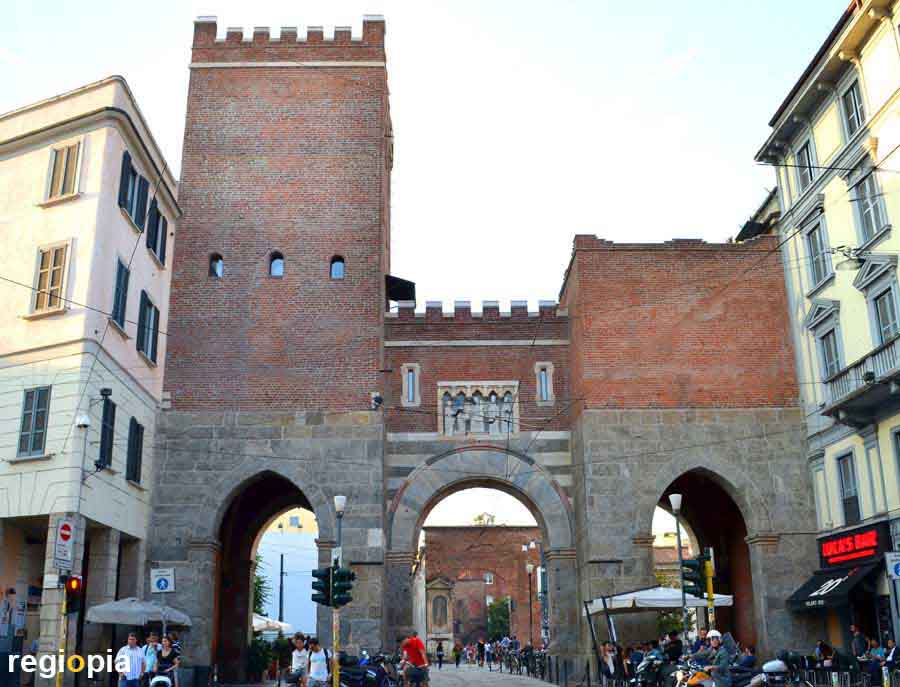
Antica Porta Ticinese
In the 12th century, the Milan city wall was extended to protect the Basilica of San Lorenzo. The gate of the Porta Ticinese is the only surviving gate of the medieval city fortifications of Milan. At the Porta Nuova are still remains of an old city gate.
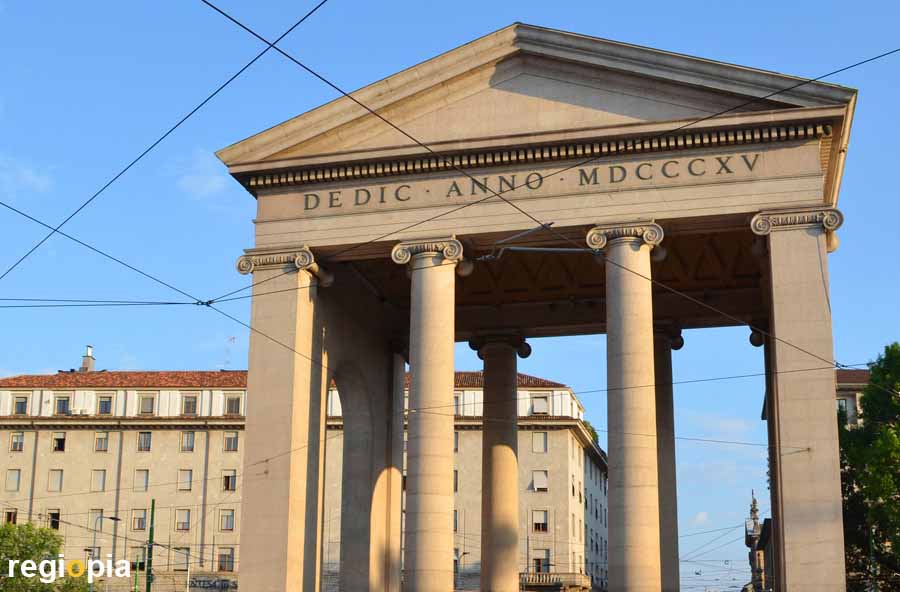
Porta Ticinese
Under Spanish rule over Milan, another city wall was built in 1560 and the Porta Ticinese moved further south. The former city gate was replaced in 1814 by a neoclassical customs house by Luigi Cagnola.
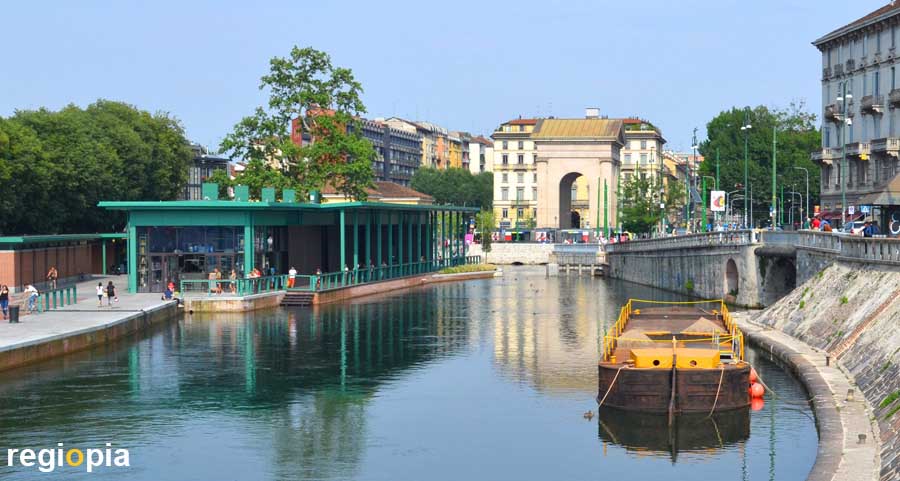
Darsena
The port basin "Darsena" was created in 1603 to provide a transshipment place for trading ships on the canals. For the Expo 2015 the dried out harbor basin was excavated and is now a popular recreation destination at the water.
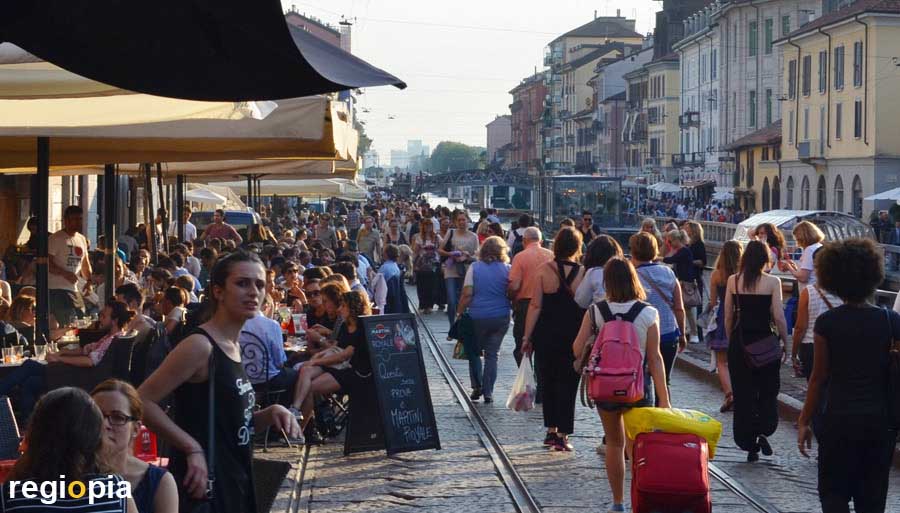
Naviglio Grande
The canals of the "Navigli" was built in 1177 and supplied Milan with goods from Upper Italy until 1930. The "Naviglio Grande" is one of the few, preserved canals and is today part of the most beautiful restaurant quarter of the city.
Map Milan attractions
Ads
Travel Guide Milan
Welcome to Milan
With around 1.3 million inhabitants, Milan is the economic center of Italy and the country's second largest city behind Rome.
Ads


